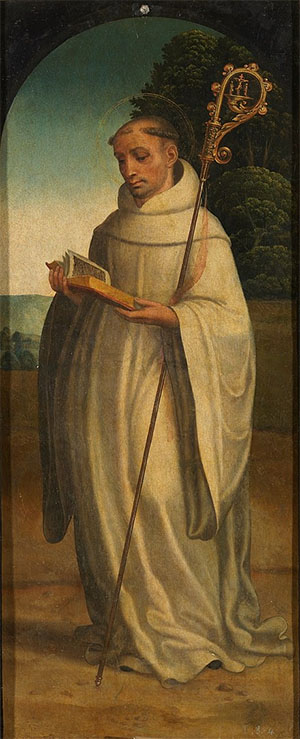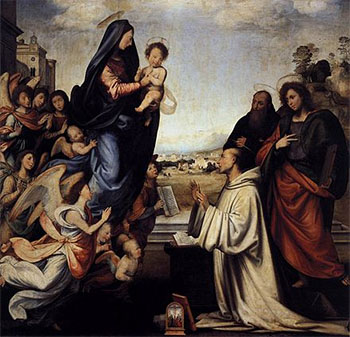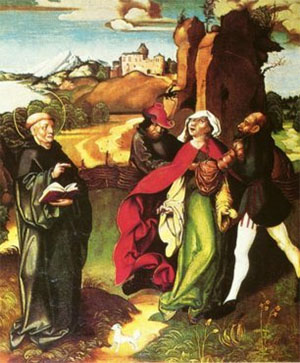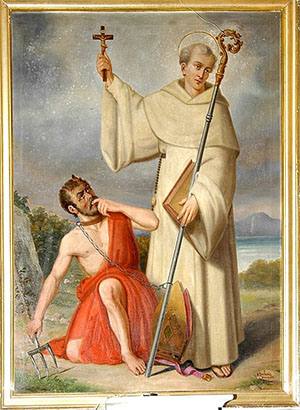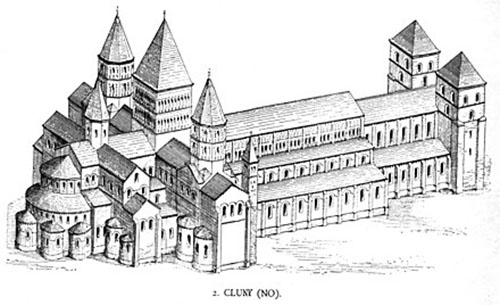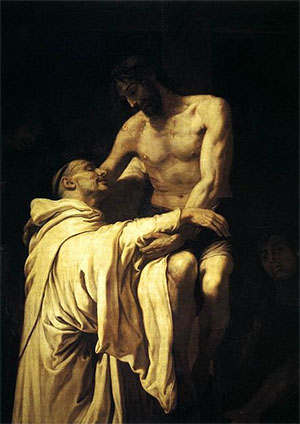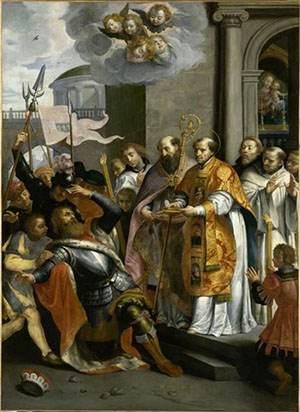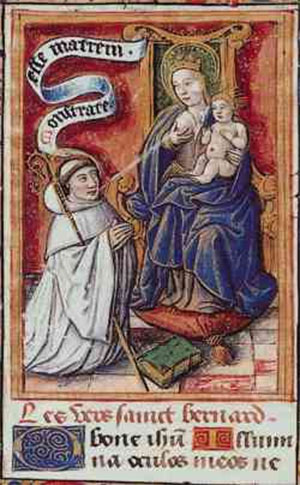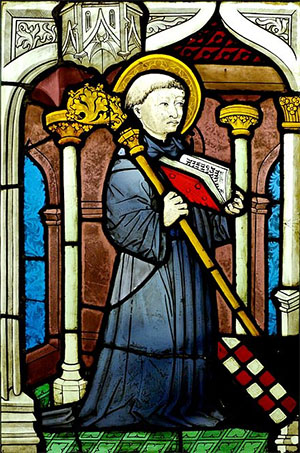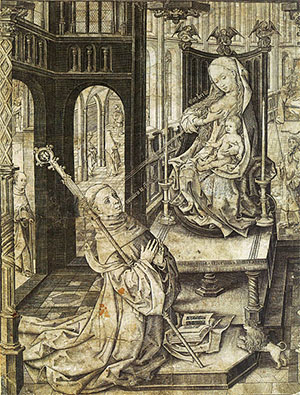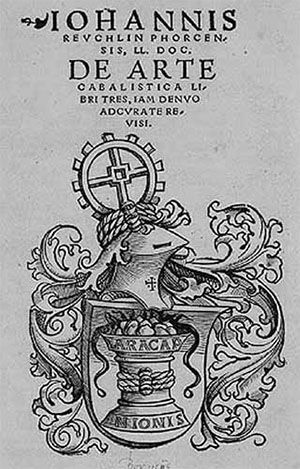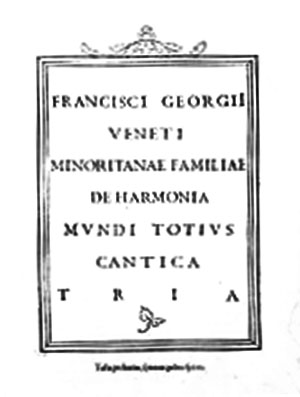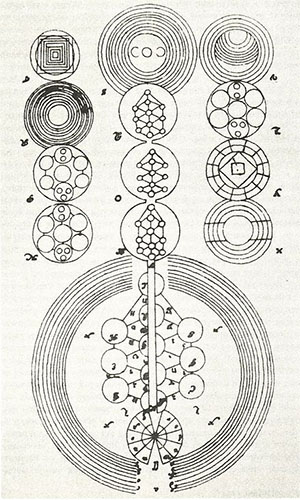CHAP. III. The present state and extent of Slavery in Hindustan, from Book V: Slavery, Excerpt from "India’s Cries to British Humanity, Relative to Infanticide, British Connection with Idolatry, Ghaut Murders, Suttee, Slavery, and Colonization in India; to Which are Added, Humane Hints for the Melioration of the State of Society in British India"
by James Peggs
1832
p. 328-360
-- India’s Cries to British Humanity, Relative to Infanticide, British Connection with Idolatry, Ghaut Murders, Suttee, Slavery, and Colonization in India; to Which are Added, Humane Hints for the Melioration of the State of Society in British India, by James Peggs
-- Slavery in India: The Present State of East India Slavery; Chiefly Extracted From the Parliamentary Papers on the Subject, Printed March, 1828, August 1832, August 1838, by James Peggs, Third Edition, 1840
-- Slavery and the Slave Trade in British India; With Notices of the Existence of These Evils in the Islands of Ceylon, Malacca, and Penang, Drawn from Official Documents, by Thomas Ward and Col, And to Be Had At the Office of the British and Foreign Anti-Slavery Society, 1841
-- Slavery in the Bengal Presidency Under East India Company Rule, 1772-1843, by Amal Kumar Cattopadhyay, Thesis presented at the University of London for the Degree of Doctor of Philosophy, 1963
-- Geographical, Statistical, and Historical Description of Hindostan, and the Adjacent Countries. In Two Volumes. By Walter Hamilton, Esq., Vol. I, 1820
-- Geographical, Statistical, and Historical Description of Hindostan, and the Adjacent Countries. In Two Volumes. By Walter Hamilton, Esq., Vol. 2, 1820
-- The Life of Sir Stamford Raffles, by Demetrius Charles Boulger, With Portraits, Maps and Illustrations, 1897
BOOK V. SLAVERY
CHAP. III. The present state and extent of Slavery in Hindustan.
The nature and extent of slavery in the British territories in India, is a subject that cannot but be deeply interesting to every liberal and humane mind. The following extracts, from the valuable Papers on East India Slavery, will throw some light on a subject, upon which little information is possessed.
The Resident at Delhi, in 1812, C.T. Metcalfe, Esq., issued a proclamation prohibiting the sale of slaves. On this subject, the Governor General addressed the Court of Directors, in 1813:— "We observed, that the proclamation not only prohibited the importation of slaves for sale into the assigned territories, but the sale of slaves actually within those territories previously to its promulgation; a measure which we were not prepared to sanction. Odious and abominable as such a traffic is, although it must be admitted that the system of slavery in this country is infinitely mitigated, when compared with that against which the enactments of the legislature in England have been directed. The laws, which have hitherto been enacted to restrain it, have been confined in their object, to THE TRADE IN SLAVES BY IMPORTATION OR EXPORTATION; but they have not been extended to the emancipation of persons already in a state of slavery, nor to the prohibition of their transfer by sale, to other masters within the country which they inhabit.
"We informed the Resident that for these reasons, and from other considerations of much apparent weight, our views were limited to the prohibition of the further importation of slaves for sale into the territories of the Hon. Company; and we accordingly directed that the terms of the proclamation might be modified, so as to correspond with the enactment contained in Regulation X. of 1811. The consultation of the annexed date contains the Resident's reply to the instructions. He stated that a general opinion prevailed, among the natives, that the total abolition of the Slave Trade had taken effect in the ceded and conquered Provinces; that he had not found the prohibition of the sale of slaves had occasioned any surprise at Delhi; and that the people were not aware, that by the proclamation which he had issued, greater restrictions were in force in the assigned territory than in any other part of the country; and that should it be published, that slaves of a certain description might continue to be sold, it would give a more formal sanction to the sale of slaves, than that traffic was ever believed to possess. The effect of this erroneous belief, on the part of the natives, appeared to the Resident to be attended with salutary consequences; and he submitted, that it was not desirable the delusion should be removed, by the publication of a formal sanction for the sale of any description of slaves. We signified to the Resident, our concurrence in the grounds on which he had suspended the execution of our instructions, and, that the proclamation issued, should continue in full force and effect."* [Par Papers, pp. 101, 102. See also p. 134.]
But, though the sale of slaves was thus prohibited in the Province of Delhi, slavery is still continued. This is evident from the Resident's communication to Government: — "In issuing a proclamation for the abolition of the future importation and sale of slaves, I had no idea of infringing on the rights of the actual proprietors of slaves. The proprietors of slaves in this territory, notwithstanding that proclamation, retain all their rights over their slaves, except that of selling them or making them the property of another. This is perfectly understood, in consequence of the decisions given in the court of judicature in trials between owners and slaves. I have more than once embraced the opportunity afforded by such trials, to explain publicly, that slaves are still the property of their owners, though not disposable property."* [Par. Papers on Slavery in India, p 104.]
The Magistrate of Bareilly in 1812, referring to the efficacy of the provisions of Regulation X. 1811, for preventing the importation of slaves from foreign countries, remarks; "This traffic, I believe, has suffered a very material check since the promulgation of the Regulation, inasmuch as children are no longer brought down from the hills, and publicly exposed for sale, as formerly, within this district; but, children are still sold within the Company's provinces, by subjects of the British government, nor does the Regulation contain any prohibition of such sale. Parents, prevented by poverty from rearing a large family, will dispose of their children to an advantage, when offered, rather than allow them to starve; the feelings of nature will confine this traffic to cases of necessity only, and will act more forcibly than any legal prohibition in preventing abuses; it may be much doubted, indeed, whether the condition of children imported from the hills was not, in most cases, much ameliorated by such importation."† [p. 141.]
A Mr. Browne, the proprietor of an estate at Anjarakandy, in Malabar, claimed the right of a master over some slaves, as a part of the Mahomedan law, under which he considered the Provinces of the Madras Presidency to be governed. "I cannot (says the Chief Secretary of the Government in 1813) agree to the proposition, that these Provinces are, so far as relates to British subjects, governed by the Mahomedan law. In questions of civil right, they are governed by the laws of the different nations to whom justice is to be dispensed. In criminal prosecutions, the Mahomeden law is, for what reason I do not know, established over all the natives in the Provinces, but not over the British. They retain the rights of their birth, and ought also to retain all the relations connected with the British character, to which it is equally abhorrent to be the master of slaves, as to endure slavery. It is expressly provided, in the several statutes, that our law shall not interfere with the authority exercised by the heads of families amongst the natives; who, from local residence at the Presidencies, are made subject in general to the British laws, but no such provision is made for British subjects as the masters of slaves!" The Advocate General expressed the same opinion; and this important position, that a Briton in India cannot be a slave-holder, was thus definitely determined by a letter from the Chief Secretary to the Government, Fort William, in 1813, to the Secretary of the Madras Government: — "The Advocate General, having stated it as his opinion that it is quite impracticable, as the law at present stands, for any British subject, to support a claim to the person or services of any one residing within the limits of the British territories as a slave; and that opinion corresponding entirely with the sentiments entertained by the Right Honourable the Governor General in Council on the subject, his Lordship in Council thinks that every case of that nature, which may be brought before the Governor in Council of Fort St. George, should be regarded as an illegal and unauthorized assumption of power; and that legal measures should be resorted to, should circumstances appear to require it, against any British subject so acting in violation of the law."* [Par. Papers on Slavery in India, p. 148.] The difference between the state of public opinion, feeling, and, we may add, law, in the East and in the West Indies, cannot fail to strike the attention of every reader. It is very justly observed, "the habitual exercise of the authority of a master over slaves, is peculiarly destructive to the national honour and character."† [p. 147.] When shall these just sentiments pervade the breast of every British subject!
Of Slavery in Dacca the Magistrate, in 1810, observes: — "I have to state in reply, for the information of the Court of Circuit, that I have found in this court several prosecutions for inveigling away children and other persons with various intents, and they are generally females: such cases, however, in this city and district, are not very numerous. The unfortunate persons who are sold for slaves, are generally little children (females), or grown up girls that are enticed away from their parents or other relations in the Mofussil. Persons already in a state of slavery are seldom, as far as I can discover from the records of the court, or from other information, inveigled away with a view of being sold; but female slaves are often enticed away for other purposes, sometimes by men, and sometimes by women keeping houses of ill-fame. Both descriptions of offence are, I believe, very prevalent, especially the former, though few of them comparatively come officially to the knowledge of the magistrate."* [Par. Papers on Slavery in India, p. 248.]
The registration of slaves was proposed by the Bengal Government to the Nizamut Adawlut in 1816, which intimates that the prevalence of slavery is considerable. "In preparing the draft of the proposed regulation regarding slavery, the Governor General in Council requests that the court will take into their consideration, the expediency of requiring, that the future purchase or transfer of slaves shall be regularly registered, and that any breach of the rules which may be framed for that purpose shall entitle the slave to demand and obtain his freedom."† [p. 249.]
Inquiry was made from Bombay, of the Supreme Government in Calcutta, in 1817, respecting the application of the 51st Geo. III. c. 23, relative to "the abolition of the slave trade, to domestic slaves, and the property of individuals in them; such slavery being known and legalized under the laws of both the Hindoos and Mussulmans, according to whose codes the courts are bound to administer justice." To which it was replied; —
"On this point the Vice President in council observes, that none of the provisions of the Acts of Parliament passed for the abolition of the slave trade in any manner affect, or profess to affect, the relation between master and slave, wherever that relation may exist by law. Whatever therefore was the law, according to the Mahometan and Hindoo codes (for those over whom they extend), on the subject of domestic slavery, before the passing of the Act of the 51st Geo. III. c. 23, continues to be the law still; more especially as those codes have been distinctly recognised and ordered to be observed by Parliament. At the same time it is not credible, that any intention existed to abrogate those codes, without reference to the established laws and usages of this country, and without repealing the Acts of Parliament, by which the observance of them is guaranteed to the natives. The native subjects of the British Government, residing in the territories subordinate to the several Presidencies have, in fact, the same authority over their slaves, and the same property in them, that they would have had if the Act in question had never been passed; and the several zillah and provincial courts are bound to receive and determine all cases of that nature, which are respectively cognizable by them, under the existing regulations.
"The other points adverted to, in the documents now under consideration, relate to the conduct which should be observed, on the occasion of applications being made by the subjects or governments of neighbouring states, with whom we are in amity, for the restoration of slaves who have taken refuge within the Company's territories. On this point it may be remarked, that the construction which has been uniformly given by the Supreme Government to the Act of the 51st Geo. III. c. 23, viz. that it was only intended to apply to the importation or removal of slaves by sea, would not involve any alteration in the course of proceedings hitherto adopted in similar cases. A slave, by entering the Company's territories, does not become free; nor can he, who was lawfully a slave, emancipate himself by running away from one country where slavery is lawful, to another where it is equally lawful. The property in the slave still continues in the master; and the master has the same right to have it restored to him that any native subjects of our territories could have, supposing that right to be established in the mode prescribed by the local laws and regulations."* [Par. Papers on Slavery in India, pp. 333, 334.]
The permission of the sale of slaves in the Deccan, appears from a letter in 1819, addressed by the Political Agent in Candeish, to M. Elphinstone, Esq., the Commissioner.
"Application having been lately made to me for permission to purchase some slaves, I took the opportunity of investigating the circumstances, which I have the honour to report for your information. It appears that the slaves were young women and girls, in the possession of some Mahratta Wunjarries, who, upon being questioned, state that they purchased them in Berar, from the Tandas of the Rajpoot Brimjarrias, who said they had got them during a late scarcity, which took place in the Nirmut district. Upon further investigation, I understand that the practice of carrying off children from one part of the country, to sell in another part, is not unusual with these people. The women appear unwilling to be sold, though they complain of their scanty food, and of the treatment they experience from their present masters. Although your letter, in answer to a former application on this subject, informed me that no variation whatever was to be made in the existing laws regarding slaves, yet it appears to me possible, that may be intended to be applied merely to the proprietary right over slaves in actual possession, and of recovering such as may desert; I request to be informed, if the practice of carrying slaves about for sale, of which several instances have lately been brought to my notice, is still to be permitted. In the mean time I have prohibited the sale of the young women in question, till I hear from you."
To which it was replied by the Commissioner: — "
The sale of slaves, as described in the above mentioned letter, is to be permitted; but all attempts to carry off young people by force, will be punished in the severest manner." [!!!]† [p. 339.]
"The mitigated kind of domestic slavery which prevails in the Deccan," says W. Chaplin, Esq., "and has prevailed from time immemorial in most parts of India, appears to be of a description entirely different from the foreign trade in slaves, which is proscribed by recent Acts of Parliament, passed since the abolition of this traffic; and, although it may perhaps, at a future period, be necessary to introduce some regulations to prevent the stealing or kidnapping of children, I conceive that any restrictive measure, that should at once put a stop to the sale of slaves, would be an innovation, which would trench materially, not only on long established customs, but on the rights of private properly. Whether this species of servitude, or rather of mild bondage, is eventually to be continued under certain modifications, or to be abolished entirely, is a question which is probably now under consideration; but as the importation of slaves from the Nizam's frontier, in consequence of the scarcity which prevails there, has of late greatly increased, the subject of your letter will be referred for the decision of the Honourable the Governor in Council. Whatever evil may result from the continuance of the traffic, it is certainly, I think, the means at the present moment of much actual good, inasmuch as it has the effect of preserving the lives of numbers of parents and children, who would otherwise perish from famine."* [Par. Papers on Slavery in India, pp. 341, 342.] — Poona, Dec. 1819.
The difference of opinion and procedure of some of the Indian Magistrates, manifests the difficulty of legislation where slavery exists. This appears by some slave cases, stated by W. Leycester, Esq., Second Judge of the Bareilly Court of Circuit in 1815. —
"In one case, Enayt Khaun is taken up by the police darogah, of Bhudyke, and sent as a prisoner to the magistrate of Cawnpore, for importing two female slaves, and the magistrate discharges him, and gives him the slaves.
"In a second case, Ooda is taken up for importing a woman named Mauncooer, by a police sowar, and delivered over to the police darogah of Bindrabun. Ooda says he bought her for twenty-one rupees in the Ranna's country, and she admits it, and adds, she understands he means to resell her. The acting magistrate liberates the woman.
"In a third case, Sabet Khawn is taken up by a jemmedar, and delivered over to the darogah of Koria Gunje. It would seem he had been sent by Assud Alee Cauzee of Jelaneh, to purchase a slave in the vicinity of Cassepore and Roderpoore (the market for slaves imported from the hills); but on coming to Bareilly he falls in with Besharut Khan, a slave-dealer, who from his stock in hand sells to him a woman named Zuhorun, twenty years of age; but the Cauzee, thinking her too old, leaves her on Sabet Khaun's hands. The assistant magistrate liberates the woman.
"In a fourth case, Nurotum is taken up by the darogah of Nudjeebabad. It would seem that he had purchased a woman named Anundee, for twenty rupees, of an inhabitant of the hills. The assistant magistrate does not liberate the woman, but takes a recognizance from Nurotum to produce her, if any other claimant should appear.
"In a fifth case, Choonee, the head of a set of dancing girls, prosecutes Hyatt Alee Cutwaul of Amrooa, for detaining forcibly Munnuvur Jaun, one of her female slaves. Munnuvur Jaun says, she is not satisfied to remain with Choonee, and the magistrate liberates her. Choonee appeals, and produces a deed of sale for the slave, executed by Shumshere, an inhabitant of the hills. The opinion of the law officer of the Court of Circuit is taken, who declares, 'the sale of a resident of this country illegal;' and the order of the magistrate was confirmed.
"The first case was submitted by me to the Nizamut Adawlut, with a recommendation that the said Enayt Khaun should be punished, and the slaves discharged, or sent back, as required by the 10th Regulation of 1811; and the court in reply adjudge that, under the construction given to the provisions of the 10th Regulation, 1811, the case in question does not fall 1ithin the operation of that Regulation; and, having referred to the court's orders, it would seem, that on a representation from Mr. Blunt, the court had decided that the regulation in question was 'applicable only to the importation of slaves for the purpose of being sold, given away, or otherwise disposed of.'"* [Par. Papers on Slavery in India, pp. 342, 343.]
It appears, that when slaves have been imported, their owners have endeavoured to evade the law against the Slave Trade, by not immediately disposing of them; on which it is very justly remarked, — "Is not keeping a person imported as a slave, to be a slave, a disposal of him? and what is to be said to the notorious fact of females, so imported as slaves, being let out in retail for the purposes of prostitution, and any offspring they may have being sold, agreeably to the daily practice regarding the indigenous slaves of the country, for the benefit of the slave master? This surely is a disposal of them and of their issue."† [p. 344.] Is not this species of slavery equal in atrocity to the slavery of the West Indies?
"Slavery in Malwa," says Sir John Malcolm, "is chiefly limited to females; but there is perhaps no province in India where there are so many slaves of this sex. The dancing girls are all purchased when young by the nakins, or heads of the different sects, who often lay out large sums in these purchases; female children and grown up young women, are bought by all ranks. Among the Rajpoot chiefs these slaves are very numerous, as also in the houses of the principal Brahmuns; the usage descends to the lowest ranks, and few merchants or cultivators with any property are without mistresses or servants of this description. Male slaves are rare, and never seen but with men of some rank and property, with whom they are usually the confidential servants. There are a variety of ways in which slaves are procured in Malwa; — numbers date their condition from a famine or scarcity, when men sold their children to those who were able to support them. A great number of the slaves of Malwa are from Rajpootana, where the excesses of the Mahrattas drove the inhabitants to exile, and to such distress as to be compelled to part with their children. But, besides these sources of slavery, there are others of a more criminal nature. There are many instances of Rajpoots, and men of other tribes, particularly Soandees, selling the children whom they have by their slaves, and who are deemed to be born in a state of bondage. This takes place when the father is in distress, or when he is tempted by a large price. The sale of the offspring of these women by other fathers than their masters is more common. These slaves are not numerous; but the further demand is supplied by the Binjarries, who import females into and from Guzerat and other countries, whom they usually pretend to have bought; and by the tribe of Gwarriah, professed stealers of female children. When these slaves are bought, an inquiry is made as to their tribe, and the general answer (particularly from the Gwarriahs) is, that they are Rajpoots. The children are taught to make pretensions to high birth, and daily instances occur of whole families losing cast in consequence of their being too hastily credited. Females in Malwa, except in times of scarcity or general distress from any cause, are sold from 40 to 50, to 100 and 150 rupees; the price is accordant with their appearance. They have been, at times, an article of considerable commerce, many being annually sent to the southward, particularly to the Poonah territories, where they sold high. This trade, which has of late years decreased, was principally carried on by the Mahratta Brahmuns, some of whom amassed great sums by this shameless traffic."* [Par. Papers as above, Report on Malwa, 1821, pp. 414, 415.]
The Par. Papers contain more minute information, respecting the state of slavery under the Madras Presidency, than of the other Presidencies in India. — "In Malabar and Canara, where the land is very generally divided, and occupied as separate and distinct properties, the labourer is the personal slave of the proprietor, and is sold and mortgaged by him, independently of his lands. In the Tamil country, where land is of less value, and belongs more frequently to a community than to an individual, the labourer is understood to be the slave rather of the soil than of its owner, and is seldom sold or mortgaged, except along with the land to which he is attached; but in Telingana, where it is difficult now to trace the remains of private property in the land, this class of people is considered free. It has been stated by very competent authority, Mr. F. W. Ellis, the Collector of Madras, that in the Tamil country, the parriyars and pullers, most of whom are slaves attached to the lands of the rallader, as well as the pulli, who are generally serfs on the lands of the Brahmun meerassidars, sometimes claim meras, or hereditary private property, in the 'incidents of their villainage;' and that 'it is generally allowed to them and their descendants, on proving their former residence in the village, however long they may have been absent from it.' On the other hand, the late Magistrate in Malabar, in addressing Government respecting the sale of men, women, and children of the Pollar, Cherumakul, Panian, Kanakan, Kallady, Yocallan, and Nacady tribes, submits that, 'if the general question of slavery, as recognised by the local usages of Malabar, or by the Hindoo and Mahomedan law, is not affected by the laws made to abolish the Slave Trade — adverting to the wretchedness and diminutive appearance of this description of natives — it still appears to be a subject well worthy the humane consideration of the Right Hon. the Governor in Council, to enact such legislative provisions as will tend to ameliorate their condition, and prevent their being sold out of the talook, or, indeed, of the estate, the place of their nativity; and above all, from being exposed to sale; by public auction, in execution of decrees, or in satisfaction of revenue demands."* [Par. Papers on Slavery in India, p. 817.]
It appears to have been common, to dispose of the slaves on an estate as a part of the real property. — "The Hindoo law (says the Collector of Malabar), on the subject of transfers of property, speaks of 'land and slaves employed in the cultivation of it,' and evidently contemplates those two species of property as one and the same, and as not properly separable from each other; and we find that not only in this, but in other countries, it has been usual to transfer the slaves who were a 'descripti glebae' with the land itself. Indeed the attachment of the Hindoos to the lands which they have always occupied, and to the village where they have always resided, is proverbial; and to separate them from their native soil, might, under such circumstances, be considered an additional act of cruelty. A certain portion of the produce of the soil which they cultivate, is, in the Tamil country, allowed by the master for the maintenance of his slaves, whose duty it is to till the ground; and, unless they were transferred with the land, the new proprietor, when he obtained possession, might experience difficulty in carrying on the cultivation, and the former master might be deprived of the means of enabling him to afford subsistence to his slaves. The probability of being transferred with the land, gives them on this coast a sort of property in their huts and little spots of ground, which they can thus occupy without any great fear of being turned out, or transferred, contrary to their interests, feeling, and comfort. It must, however, be observed, that on the other coast universally, and even generally on this coast, slaves are not necessarily sold with the land, although the convenience of all parts seems to have rendered the practice common."
The apathy manifested by the Collector of Calicut in 1819, respecting the sale of slaves for default of revenue, shews the influence of the slave system upon the most respectable of the European functionaries of Government. "In attempting to ameliorate the condition of these slaves, care must be taken that we do not increase them. The partial measure, of declaring them not liable to be sold for arrears of revenue, will be a drop of water in the ocean; though, why Government should give up a right, which every proprietor enjoys, is a question worthy of consideration."* [Par. Papers on Slavery in India, p. 846. See p. 435.]
An extract of one of the Rejected Police Regulations, refused Registration by the Supreme Court of Bombay, in 1826, affords some idea of the state of slavery in that part of India, at the period referred to.
Of the Slave Trade and Slavery.
"All importation of slaves into this Island for sale is prohibited.
"The petty sessions shall in such cases emancipate the slave and send him or her back to the family, or to the place to which he or she was brought at the expense of the importer. When the slave is desirous of remaining, the importer shall pay him the money which would otherwise have been employed in defraying the expense of his return. The petty sessions may inflict further punishments in aggravated cases, not exceeding the fine of 500 rupees, and imprisonment for six months in default of payment.
"All children born of parents in a state of slavery in this Island, after the first day of January 1812, shall be free.
"The said court of petty sessions shall have power of summary conviction in all cases of persons enticing or conveying away any married females, or unmarried females under the age of thirteen years, out of the protection and against the will of the husband or father, or other person having the lawful protection and governance of any such female; for the purpose of her prostitution in any way, or for her disposal in marriage against the will of the person having such lawful protection or government as aforesaid; such offenders to be punishable by fine not exceeding 500 rupees; or in lieu thereof, as the case may seem to require, or in default of payment, imprisonment, with or without hard labour, as the case may seem to require, for any time not exceeding six months."† [See Ori. Herald, vol. xiv. pp. 515-533.]
The following copious extracts from the reports of eleven Collectors, to whom the Madras Government had addressed queries respecting the state of slavery in their respective districts, appear peculiarly interesting. The whole letter, from the Secretary of Government in the revenue department, contains fourteen folio pages, and bears date, April, 1819.
"In SALEM slavery does not appear to exist. The Collector observes, 'I can safely state that, in the manner referred to in these communications, there is no vestige whatever of slavery in this collectorate, nor has any such practice obtained from the time the country came into possession of the Honourable Company. During the Mussulman government, there were a few slaves belonging to certain Nunjah lands in the vicinity of the Cauvery, and there are now some descendants of these people; but they are as free as any other inhabitants. I have heard of one or two instances of a child being sold for the purpose of domestic slavery; but this is uncommonly rare, and such a circumstance as a person being sold as a slave has never transpired.'
"In MADURA and DINDIGUL slavery existed during the Mahomedan government. The slaves were sold at the pleasure of their masters, but they were not 'adscripti glebae;' not necessarily sold whenever the land was sold.
The Collector's words are, 'When a puller or parriah was unable to gain a livelihood, he was accustomed to offer himself or his relatives as slaves to the cultivating inhabitants, for a sum of money, varying from one to ten cully chuckrums, when a bond of slavery was drawn out and signed. If they married, their children were considered the property of the owners; they were employed in the cultivation of land, and were maintained by the owners, who frequently, for their services, would grant them a soluntrum, or allowance in grain, in addition to other allowances. If the proprietor of land was obliged to dispose of the whole of his lands, he still retained possession of his slaves, and disposed of them as he pleased, as they were not considered attached to the land thus sold. If an owner was unable to maintain his slave, he could let him out to others, by which means he frequently derived a maintenance both for himself and his slave; but the slave was obliged to return to his master whenever he required him, who could mortgage or sell him at pleasure. Since the assumption of the country, some slaves continued with their masters; others have left them, and have even enlisted as sepoys. I cannot discover that any puller has sold himself as a slave of late years. Indeed, slavery seems gradually disappearing; which may be attributed to the knowledge, that it is not encouraged in the different courts of justice. Some pullers cultivate their own lands, and have their own puttiams. Those who cultivate the lands of others, and who are not slaves, receive a regulated hire.'
"In COIMBATORE slavery is reported to exist, 'but in a very few villages.' The Collector observes, 'From all that I can learn, it appears certain that, the owner has a right to sell his slave without the land; but that it is a right very seldom, if ever, exercised. The highest price for a good slave is fifty rupees; the price, however, is seldom so high. The children of slaves are born slaves. On the birth of a child, the master presents the parents with cloths, and one or two rupees. The master is supposed to be vested with despotic authority over their slaves, and with power to punish them. An apprehension, however, that the exercise of such authority is not permitted by the British government appears generally prevalent, and rather operates to prevent the merchandise of slaves, as they are considered to be less valuable, when free from the fear of punishment. There appears reason for thinking that the slaves are, on the whole, better treated by their masters than the common class of free labourers. The master possesses a power, not only over the person, but over the property of his slave; and he may make use of the cattle reared by the slave for agricultural purposes! The slaves are sold with the land; but, if they should object to serve another master, they are not forced to do so. This I take to be an indulgence of the master, not a right of the slave. The slaves have a share of the produce allotted for their subsistence, about AN EIGHTH. In some instances, land has been made over to the pullers, which they cultivate for their support. In many places, where slavery does not exist, a species of bondage is introduced, by the ryots undertaking to bear the expense of their puller's marriage, upon condition of the latter binding themselves to serve the ryots exclusively for life. Slavery may almost be considered as extinct in Coimbatore.'
"In TANJORE slavery exists; but, as in Madura and Dindigul, it is founded, in the first instance, upon voluntary contract. 'The slaves are never seized or sold for arrears of revenue. The slaves here are of two casts only, the Puller and Pariah; the origin of their bondage arises in a voluntary agreement, on their part, to become the slave of some other man more powerful than themselves, upon whom they thus impose a more strict obligation to protect and maintain them and their families, than if merely serving them as labouring servants. The Brahmuns, in consideration of their cast, do not receive bonds of slavery directly in their own name, but have them generally drawn out in that of some of their soodra dependents. When a bond of slavery has been given, it ceases not with the life of the party, but is binding upon the descendants of the original giver, who continue bound by the conditions of it. In return, the owner is obliged to find subsistence at all times, and under all circumstances, for the family of his bondsman; whom he can employ in any manner he pleases, although it is generally as a labourer in the fields. The bondsman does not reside in his master's house, nor form any part of his family, but has a house provided for him along with the others of his cast, to which a back yard of eighty goontahs rent-free is attached, the same as other labourers. The master has the power of selling the slave, but he cannot sell him to any one who will carry him to a distant part of the country, without his own consent. If the master, through poverty or other cause, fails or becomes unable to subsist his bondsman and his family, he is at liberty to seek employment as a free labourer, but is liable to be reclaimed at any time by his master, when he may be in a condition to fulfil his part of the agreement. When lands are sold, in any way, it is always independent of the bondsmen, if any, upon it. If they are likewise to be sold, separate deeds of transfer are passed. If not, they continue attached to their former masters. No persons of this description have ever yet been considered as seizable property, or sold for an arrear of revenue; nor do I believe ever by a judicial decree in any civil cause; nor have I ever known this species of property recognised by the officers of government, although it is by the natives themselves, in their transactions with each other.
'On the part of the bondsman, his rights are subsistence and protection for himself and family from his master, with liberty to seek it elsewhere, as a free agent, if not found him; and the right of not being removed by sale to a distant country from the place of his birth. With regard to himself, personally, his treatment from his master is the same as that of his other labourers, which is, in general, of a mild nature; but he is not more liable to personal punishment than others, in consequence of his state of bondage; and any cruelty or abuse of authority on the part of the master, towards his bondsman, would be complained against, and punished with equal strictness, as if committed upon a free man. The Board will perceive that the condition of these people differs very little from that of the common labourers. The disadvantage to the bondsman is, the power of being sold or transferred to other masters; and this is not very frequent, as it is the last property, generally, which is disposed of by a person in distressed circumstances. The advantages are, the more effectually securing subsistence and protection to themselves and families, particularly in times of trouble or difficulty, than it is binding on masters in general to bestow upon common labourers; and this without rendering their condition in any degree intolerable, towards the amelioration of which, the equity and mildness of the British Government have greatly operated, in respect to rendering the conduct of masters to their servants indulgent. I do not find that the system of slaves attached to the soil, and transferrable by purchase as appendages to the land, obtains here.'
"TINNEVELLY. 'From all the information I have been able to collect, I understand, it is usual, in this district, for slaves to be sold or mortgaged either with the land or separately, as the proprietor pleases, or his wants require; and that there is no particular rule, or general custom, by which the conduct between the master and slave, and between slave and master, is governed, further than that the master has, at all times, the command of his slave's labour, and that the slave cannot work for any other person without the permission of his master.
'In regard to the treatment of masters towards their slaves, it does not appear to be incumbent on them to afford a subsistence except when employed in their business; and then it is on the lowest scale of allowance, being generally no more than two measures of paddy per day. At other times their slaves are obliged to seek a livelihood at the hands of others, being bound only to return to their masters when the season of cultivation commences. Besides this allowance, which the slaves receive from their masters on working days, they are entitled, when the crops are reaped, to a small deduction from the gross produce, called here, ' Paroo,' which varies in different villages, but amounts generally to about 23-8 percent. It is usual, when deaths occur among them, for their masters to assist them in the necessary funeral expenses; and on marriages, births, and festival days, to grant them presents, according as their circumstances will admit; but these acts are quite voluntary on the part of the masters, and the slave can claim nothing more than a bare subsistence while he works, and his soluntrum, as above described, at the time of harvest.
'All punishment of the slave by the master, if this power ever existed, and was recognised in former times, seems to be at an end; and there is no instance, within my experience in this district, of a slave complaining of ill-treatment from his master. The fact, indeed, appears to be, that the slave is so necessary to the cultivation, and labourers are so scarce, that the proprietors find it their interest to treat them well; and the slaves, in time, become so attached to the village in which they are settled, that they seem not to consider their situation, nor shew any desire to be free. In calling upon the tehsildars for an account of a person's property, to know whether he is a fit security for another, it is usual, if he possess slaves, to include them, a male slave being estimated in value from 3 to 15 C. Chuckrums (R 6-93/256 to 31-209/256), and a female from 3 to 5 C. Chuckrums (6-93/256 to 10-155/256), but I have always rejected them in the account as unavailable property by the Sircar, and none have ever been sold in this district for an arrear of revenue.'* ["The jemn value of a good Perier, as well as a good Addian (slave), is thirty rupees; Otty, twenty-seven and a half rupees; Kanom, fifteen rupees; and the jemn value of a less able one of either tribe, is twenty rupees; Otty, seventeen and a half rupees; Kanom, ten rupees; and Paneyain, eight rupees. The jemn value of children (male) of those sects is twelve rupees. The jemn value of a female slave, of any of the two tribes above mentioned, as well as of their female children, is three rupees and eighty reas. The pattom of a good cherman of any of the two sects above mentioned, is three paddies of paddy; that of a less able one, two paddies; that of a boy, one paddy; and that of a female of those sects is also one paddy. The jemn value of a good slave of the Moopan and Naiken tribe, is sixty-four silver fanams; Otty, fifty-two; Kanom, thirty; and Verroom Pattan, four silver fanams, but the females of those tribes are not given on Pattom or by sale. The jemn value of a good Poolean slave is twelve rupees; Otty, ten rupees; and Kanom, six rupees; and the jemn value of a less able one, eight rupees; Otty, six rupees; Kanom, four rupees; and Verrom Pattom, one paddy of paddy. The value of a good Panian or Addian (slave), might be said to have increased, by five rupees, above the old price, but that of the Naiken, Moorpan, and Poliar, continues still the same." (Par. Papers, pp. 852, 853.)]
"SOUTH ARCOT. The slaves in this collectorate are mostly of the Pully and Pariar casts, and the majority of them are chiefly devoted to the pursuit of agriculture. The number of slaves in this district, of both sexes, including children, amounts to upwards of 17,000; and they appear to have been generally born in a state of servitude, through some contract of their forefathers. The Hindoo code of laws, religious and civil, seems to declare that the Soodra tribes are naturally born in a state of servitude; and, although some of the superiors of the sub-divisions of that tribe in modern days, have emancipated themselves from this degrading thraldom, yet the lower casts are always looked upon as natural slaves, the property of any person, who contributes to defray their marriage expenses, which is the ordinary way, at present, of constituting hereditary slavery. Previously to the assumption of the Carnatic, the owners of slaves were empowered to punish them, either by castigation or confinement, at their discretion; but that power, subsequently to the British administration, has ceased to be exercised. The possessions and acquisitions of slaves, are generally considered the property of their masters, who, however, usually relinquish them to the family of the slave. Slaves cannot enter into any matrimonial connexion without the consent of their owners, who, as they defray the expenses of the marriage, virtually revive the contract of hereditary bondage; for the offspring of slaves are always regarded as the property of their father's owner.
'It is stated that the slaves of this district can be sold by their owners to any person, and to an alien village, and that no slaves are attached to any particular soil or village; but I am induced to believe that such a practice is at variance with the rights annexed to the state of real bondage; for in some Meerassi villages it is known that the Meerassidars have advanced pretensions to possess an equal proportion of the slaves with their share of the villages, and I also believe that such a practice is hardly ever resorted to. The price of a male slave and family, when sold by their owner to another person, varies considerably, and ranges from ten to fifty pagodas. The owners of slaves are required to provide them with food and clothing, to defray their wedding expenses, and to assist them on the births of children, and in their funeral charges. The food differs according to the opulence of the owner, but is always sufficient for subsistence, or the owner permits the slave to serve elsewhere during his poverty. The clothing is very scanty, except when the slaves are chiefly employed for domestic purposes; and I cannot discover that the apparel is designedly calculated to portray the class of the wearers. The duties of slaves are to attend the cattle and agriculture, and to assist in domestic services, connected with the house or person of their owners.
'It does not appear that enfranchisement of slaves ever takes place; yet as some owners have been reduced to indigence, and are unable to employ or subsist their hereditary slaves, those persons are ostensibly free, and labour for any person who will employ them. Cases of emancipation occur in the extinction of the owners' families; and from this description of Soodras, who still sacrifice their liberties, modern slaves are constituted; for they are mostly very needy, and consent to perpetual and hereditary bondage for about twenty or thirty pagodas, which the cultivator advances for the celebration of the marriage ceremony. In no instance, I believe, do engagements exist, where a labourer discharges such a loan by his manual labour.'
"CHINGLEPUT. 'The slaves employed in the cultivation of the lands, and to which this report principally refers, have, for the most part, their allowances regularly rendered; so much grain being granted to each labourer, and a proportionate subsistence to each of his children or others of the family. They are housed and clothed; and, during the principal festivals, certain allowances are made them both in money and articles required for their ceremonies. Their marriages are also performed at the charge of their masters; and, when reduced by infirmity, they are also supported by their proprietors. The condition of this description of people, composing the chief part of the Pariahs of the district, has, of late years, considerably changed. This may, in a great measure, arise from the vicinity of their situation to Madras, where this system is known to be abrogated. Many of them there obtain employment, and their proprietors would find it difficult to reclaim them; and the regulations have so far circumscribed the authority formerly exercised by the proprietors, that they cannot keep them under control, — when the power was vested in them of inflicting on them very severe corporeal punishment, or confining them for the neglect of the duties assigned them: in former times the discipline exercised by the proprietors over their slaves was of a very severe description. The proprietors finding themselves very incapable of employing their services, or rather controlling them as arbitrarily as before, complain less of the loss of this description of property. The slaves are also possessed by many of the Vellairs, &c., who have long since established themselves in the cultivation of particular villages; but their situation, in such cases, is similar to those in the service of other soodras. The sale of adami (slaves) has been, I believe, of late years, discontinued, or of very rare occurrence; and in these parts no attachment of such property has ever been made on account of the dues of government.'
"TRICHINOPOLY. — 'In the wet districts of Trichinopoly, the number of pullers may be stated at 10,000, including those employed for the purpose of watching and feeding the cattle. In the dry districts, there are about 600; but pullers are only to be found in those villages where there is paddy cultivation. The pullers of the dry districts appear to be liable to the same rules, and to possess the same rights, as those of the wet districts. The services they perform are chiefly confined to the irrigation of the land in its several stages of cultivation; but their services are also occasionally required by their masters, in the menial offices of their household establishment. If a wall or pundall is required, the pullers are obliged to erect it, without any further recompense than their established emoluments. The pullers are usually sold with the land; but there are many cases in which they may be purchased independent of it. The price of a puller varies from five to ten pagodas, according to his age and qualifications. Their services are also occasionally mortgaged; a pullee, or female slave, is never sold; while it would appear that, in Malabar, men, women, and children, are sold indiscriminately.
'The pullers are supposed to be entirely supported by their masters, in sickness and in health. Their marriages are made at the expense of the meerassidars, as well as the expense of their funerals. They enjoy some little gratuity at every birth, and receive a certain established sum at the principal Hindoo festivals. I have noted a list of the yearly emoluments a puller is properly entitled to receive; and these emoluments, though small, I have every reason to believe, are scarcely ever withheld.*
[FN: The extent of cultivation to be made by a puller and by a pullee, is 150 cullums of paddy.
Annual Emoluments. / ru. / an.
Warum of a puller culs / 8 / 5-3/8
Do. of a pullee / 6 / 6-3/4
TOTAL / 15 / 0-1/8
Batta at the commencement of each fusly for ploughing / 2 / 4
Soluntrums for sowing / 0 / 6
Reaping share a' 5 per cent / 7 / 6
Thrashing do/ 1 / 0
Pongal feast / 1 / 0
Duparaly do / 0 / 0-1/8
Gramadava do / 0 / 1-1/2
Total annual / 26 / 1-1/8 / 5-5/8 fs.
Proposed addition of warum a' 2 per cent / 3 / 0 / 0
TOTAL / 29 / 1-1/8 / 5-5/8 fs.
Contingencies estimated:
For a marriage / 4 / 0 rs. / 8
For a birth / 0 / 2 fs. / 2
For a death / 0 / 2 fs. / 2
TOTAL / 4 / 4 rs. / 8 / 4
Total / 33 / 5-5/8 rs. / 9 fs. / 1-1/8"]
[Quote cont'd below:]

